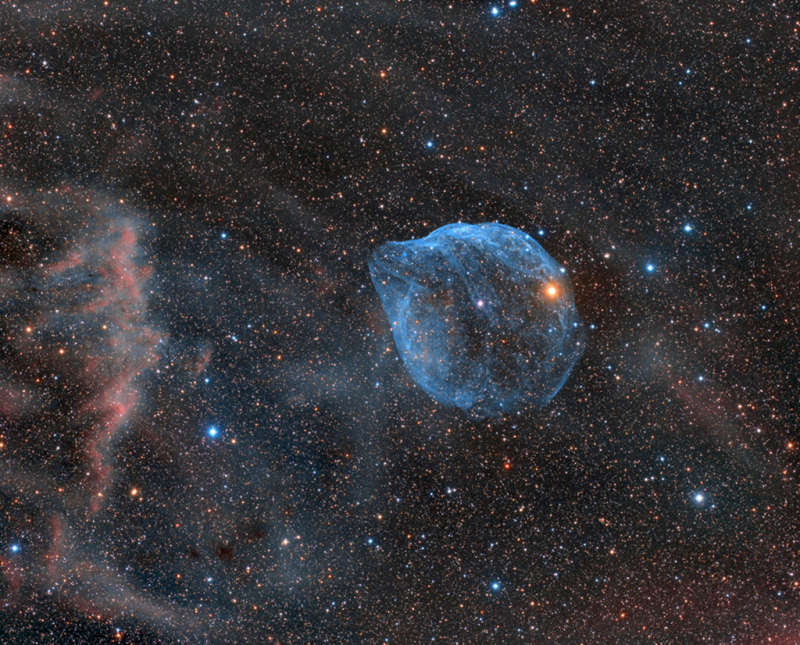
|
Credit & Copyright: Laubing
Explanation:
Blown by fast winds from a hot, massive star,
this
cosmic bubble is huge.
Cataloged as
Sharpless 2-308
it lies some 5,200 light-years away toward the constellation of
the Big Dog
(Canis
Major) and covers slightly more of the sky than a Full Moon.
That corresponds to a diameter of 60
light-years at its estimated distance.
The massive star that created the bubble, a
Wolf-Rayet
star, is the bright one near the center of the nebula.
Wolf-Rayet
stars have over 20 times the mass of the Sun
and are thought to be in a brief,
pre-supernova phase of massive star
evolution.
Fast winds from this
Wolf-Rayet
star create the bubble-shaped nebula as they
sweep up slower moving material from an earlier phase of evolution.
The windblown nebula has an age of about
70,000
years.
Relatively faint emission captured in the expansive image
is dominated by the glow of ionized oxygen atoms
mapped to a blue hue.
SH2-308 is also known as The Dolphin Nebula.
|
January February March April May June July August September October November December |
| ||||||||||||||||||||||||||||||||||||||||||||||||
NASA Web Site Statements, Warnings, and Disclaimers
NASA Official: Jay Norris. Specific rights apply.
A service of: LHEA at NASA / GSFC
& Michigan Tech. U.
Based on Astronomy Picture
Of the Day
Publications with keywords: Wolf-Rayet star
Publications with words: Wolf-Rayet star
See also:
- APOD: 2025 November 24 Á Apep: Unusual Dust Shells from Webb
- APOD: 2025 March 17 Á Thors Helmet
- APOD: 2025 February 3 Á Wolf Rayet Star 124: Stellar Wind Machine
- APOD: 2025 January 29 Á Dust Shells around WR 140 from Webb
- Sharpless 308: The Dolphin Head Nebula
- APOD: 2024 January 9 Á Thors Helmet
- APOD: 2023 March 29 Á Sh2-308: A Dolphin Shaped Star Bubble
